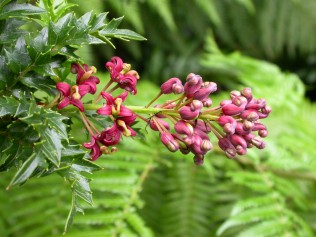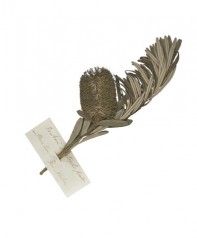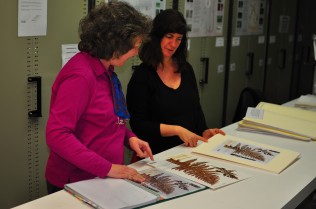 The Tasmanian Herbarium, part of the Tasmanian Museum and Art Gallery (Department of State Growth), is responsible for the development, maintenance and management of the botanical collections of Tasmania. The preserved plant specimens (more than 255,000) that make up the Tasmanian Herbarium are internationally acknowledged as the most comprehensive record of the Tasmanian flora in the world.
The Tasmanian Herbarium, part of the Tasmanian Museum and Art Gallery (Department of State Growth), is responsible for the development, maintenance and management of the botanical collections of Tasmania. The preserved plant specimens (more than 255,000) that make up the Tasmanian Herbarium are internationally acknowledged as the most comprehensive record of the Tasmanian flora in the world.
The founding collections of the Tasmanian Herbarium date from the early 1830s, and were made by early colonial amateur botanists such as Robert William Lawrence, Ronald Campbell Gunn and Joseph Milligan, who were residents and collected widely across the State. There are also some older collections dating from the earliest European contacts with the Island, notably the voyages of Captain James Cook in 1777, Captain Bruni D’Entrecasteaux in 1792 and 1793, Captain William Bligh in 1792 and the exploration of Robert Brown from 1802 and 1804.
 Major collections held at the Tasmanian Herbarium include those of Leonard Rodway and William Weymouth (late 19th and early 20th century), and those of Winifred Curtis, Dennis Morris and Janet Sommerville. The most recent very significant acquisition is the lichen, bryophyte and subantarctic vascular plant collection of the Australian Antarctic Division. The ongoing building of the collection is a major focus of the work of the Herbarium with thousands of new specimens being added every year.
Major collections held at the Tasmanian Herbarium include those of Leonard Rodway and William Weymouth (late 19th and early 20th century), and those of Winifred Curtis, Dennis Morris and Janet Sommerville. The most recent very significant acquisition is the lichen, bryophyte and subantarctic vascular plant collection of the Australian Antarctic Division. The ongoing building of the collection is a major focus of the work of the Herbarium with thousands of new specimens being added every year.
The Tasmanian Herbarium’s main research objectives are to document, describe and name the native and naturalised flora of Tasmania. There are known taxonomic problems that need to be resolved as well as many species that are still to be discovered, documented and named, especially among the cryptogams (e.g. lichens). This work is fundamental to all other pure and applied research on Tasmanian plants and underpins the management and protection of Tasmania’s unique flora.
 The Tasmanian Herbarium is a partner in the ALA through the Council of Heads of Australasian Herbaria (CHAH). The Herbarium’s vascular plant collection (c. 160 000 specimens) is fully databased, and all specimen records are made available through the ALA and Australia’s Virtual Herbarium (AVH). Databasing of cryptogams is incomplete. The data contribute to an authoritative core of the ALA’s biodiversity records – vouchered specimen records that are continually updated and kept current in the face of new taxonomic knowledge. If your study or query involves Tasmanian plants, the specimen records provided and maintained by the Tasmanian Herbarium are likely to play a key role.
The Tasmanian Herbarium is a partner in the ALA through the Council of Heads of Australasian Herbaria (CHAH). The Herbarium’s vascular plant collection (c. 160 000 specimens) is fully databased, and all specimen records are made available through the ALA and Australia’s Virtual Herbarium (AVH). Databasing of cryptogams is incomplete. The data contribute to an authoritative core of the ALA’s biodiversity records – vouchered specimen records that are continually updated and kept current in the face of new taxonomic knowledge. If your study or query involves Tasmanian plants, the specimen records provided and maintained by the Tasmanian Herbarium are likely to play a key role.